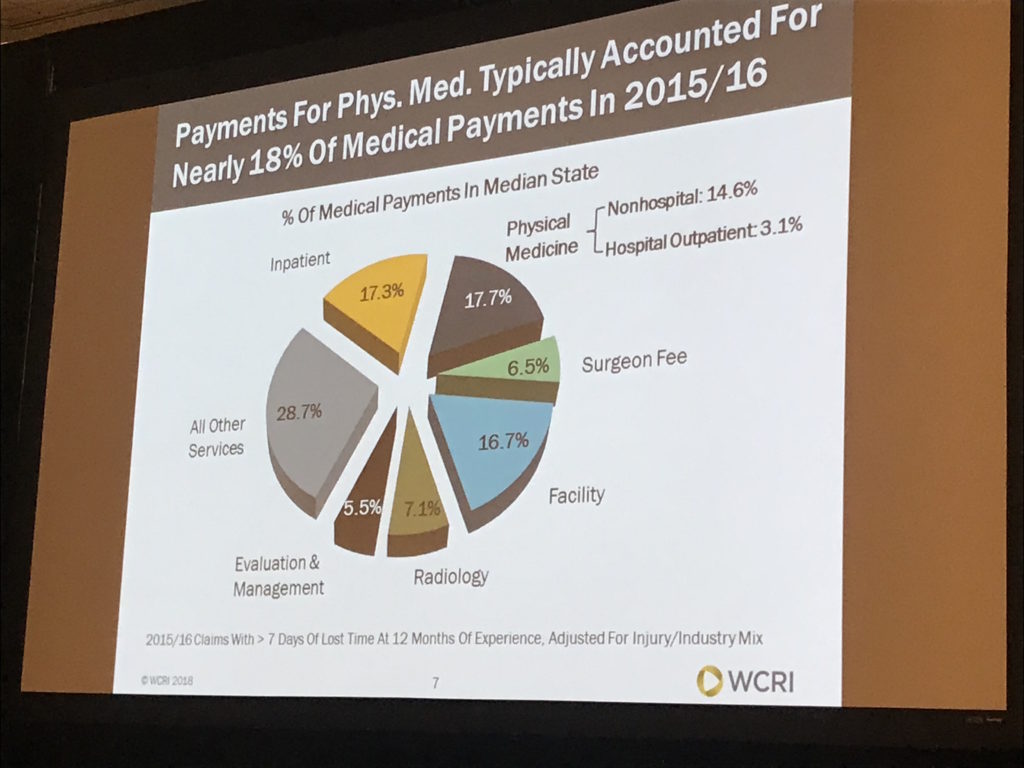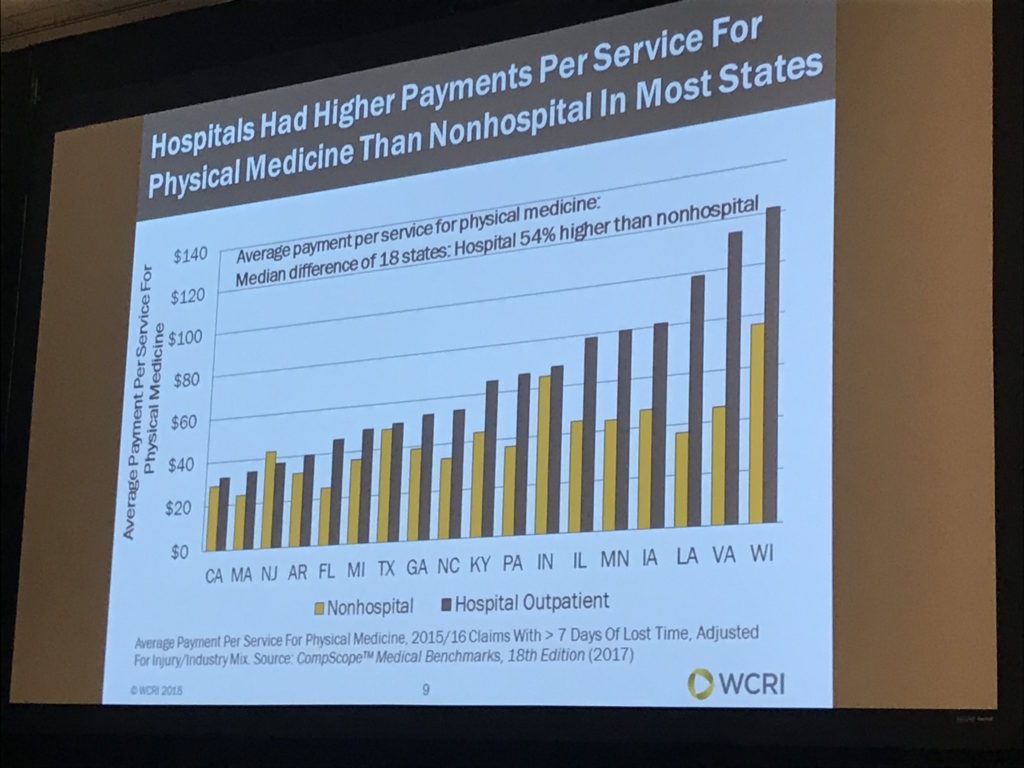Physical medicine – chiropractic, occupational and physical therapy – accounts for about one out of every six dollars of workers comp medical spend.
Key takeaways from DR Rebecca Yang’s discussion of the latest CompScope(tm) report:
The location of PM services has shifted from hospital outpatient to non-hospital locations since 2003.
PM accounted for almost 18% of WC medical costs, with non-hospital totaling 14.6%.
Part of the reason is likely reimbursement; non-hospital care averages $41 per unit, while hospital is almost 50% more expensive at $60; this varies quite a bit by state.
Anecdotally, several payer clients have told me their PM costs have been increasing; some are concerned and others see this as likely – and not unwelcome. This latter group sees PM as a replacement or substitute for more invasive/riskier and expensive care – specifically surgery and opioids.
Don’t have any data to support these anecdotes, but hope to hear from anyone who’s looked into this.
What does this mean for you?
Increasing physical medicine costs may well be a good thing.





Joe,
Great post for us physical therapists and others that know we are a big part of the solution for musculoskeletal and lifestyle related costs.
There is a bunch of good research about the value of physical therapy and reducing both costs and disability. Getting folks to the right care at the right time. Just one example:
“Physical therapist researchers John D. Childs, PT, PhD, et al analyzed 122,723 patients who went to a primary care physician following an initial LBP episode and received physical therapy within 90 days. Of these, 24% (17,175) received early physical therapy (within 14 days) that adhered to guidelines for active treatment. During a 2-year time period, these patients made significantly less use of advanced imaging, lumbar spinal injections, lumbar spine surgery, and opioids than did patients in other combinations of timing and adherence. Early physical therapy patients also had 60% lower LBP-related costs as compared to 33.5% (23,993) of patients who had delayed and adherent physical therapy (between 14 and 90 days). Patients received physical therapy within the Military Health System, one of the largest single payer health systems in the United States.”
The reality is that most of the value is in the movement and keeping folks away from excessive opioids and expensive surgery. Also, the side effects for properly Rx’d movement and exercise are all good….really hard to overdose or die from an iatrogenic infection…
The movement truly is magic….
“This latter group sees PM as a replacement or substitute for more invasive/riskier and expensive care – specifically surgery and opioids.”
It would be helpful if this community could see physical medicine as the appropriate conservative approach to get the patient engaged and actively participating in rehabilitation. Too often see conservative measures leapfrogged for the unnecessary surgery, leading to poor outcomes and the opioids. Physical medicine is incredibly important.